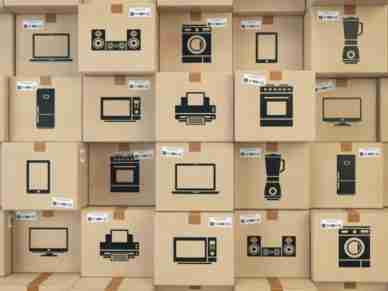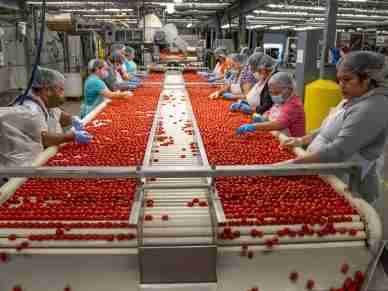
The warehousing industry has been constantly evolving over the years, driven by new technologies and trends that are shaping modern warehouse operations to be safer and more efficient than ever before. Embracing such innovations allows businesses to boost their warehouse productivity and thus cater to their customers’ needs much faster. Doing so is also crucial in future-proofing their operations, ensuring that they can keep up with competitors and the growing demands of their customers.
Thus, businesses should always be up to speed with the latest warehousing trends so they would know which equipment or technology to acquire for their warehouse in the coming years. To that end, here are some equipment and technologies that will likely become commonplace in warehouse facilities in the near future.
Very Narrow Aisle (VNA) Forklifts
Maximising warehouse storage capacity has always been a priority for many businesses to reduce operational costs. However, optimising storage space often leads to narrow aisles, which then makes it difficult or even dangerous at times for forklifts to move around in. These issues can be solved by using a VNA forklift as this machine is specially designed to operate in tight spaces. With VNA forklifts in their fleet, warehouses are able to increase storage capacity by reducing aisle widths without compromising safety or efficiency. For businesses with high-density storage warehouses or looking to further optimise their storage space, VNA forklifts will prove to be an invaluable investment.
Robotic Picking Systems
With the global e-commerce market’s rapid growth, businesses have been dealing with high order volumes and expectations of quick turnaround times. These demands have led to robotic picking systems becoming an increasingly common sight in big warehouses. These robotic arms are equipped with sensors and algorithms powered by artificial intelligence (AI) to identify, pick, and sort products with high accuracy and speed.
Robotic picking systems reduce reliance on manual labour, which brings in cost savings for businesses. Given that order picking will be automated, there are also less chances of errors or delays happening compared to when manual order picking is employed. Because of this, businesses can allocate their workers to other warehouse tasks and thus maximise their workforce.
Drones
Future warehouse facilities are also expected to utilise drones more to improve their inventory management processes. Equipped with cameras and scanning technology, drones can be used to quickly scan barcodes or tags and thus update stock level data in real time. This technology makes time-consuming manual inventory checks a thing of the past, allowing warehouses to significantly improve productivity while also reducing human error.
With drones, businesses can feel much more confident in upscaling their warehouse operations in the years to come knowing that they have the technology to make inventory checks as efficient as ever even without hiring additional manpower.
Automated Guided Vehicles (AGVs)
Another technology set to improve warehouse efficiency and safety are automated guided vehicles. These are self-operating vehicles equipped with sensors, cameras, and other technologies that allow them to transport goods with zero to minimal human intervention. AGVs can perform repetitive warehouse tasks such as loading, unloading, and moving inventory from one location to another, freeing up workers to attend to more complex tasks instead.
AGVs also ensure that goods are always delivered on time as they’re able to maintain consistent speeds for each transport without worry of fatigue, which significantly increases warehouse productivity. Moreover, AGVs are quick to adapt to warehouse layout changes as they rely on sensors and intelligent navigation systems to function. This feature makes them beneficial for businesses looking to upscale their warehouse operations or to optimise their storage layout in the years to come.
Wearable Technologies
Alongside innovations on warehouse equipment, tools used by workers have also been improving over the years. In the future, warehouse workers will be expected to rely more on wearable technology to go about their daily tasks with increased efficiency. Devices such as smartwatches, fitness trackers, and smart glasses will make tracking productivity much easier. They can also be used to retrieve information on the go, such as a worker using their smart glasses to locate a particular shelf or item. Meanwhile, smartwatches can be used to receive instructions in real time.
Wearable technology also allows additional health and safety measures to be accommodated. With fitness trackers taking note of vital signs, workers and supervisors alike can be alerted of potential health risks. Wearable tech can also alert workers of any potential hazards, such as when forklifts or other heavy machinery are within their vicinity.
AI-Integrated Warehouse Management Systems (WMS)
While not strictly an equipment, WMS have become an integral part of many warehousing operations for their ability to manage inventory, orders, and various warehouse tasks in a consolidated software. With AI integration, WMS can even be more powerful by predicting demand, automating replenishment, and identifying inefficiencies in real time. This allows warehouses to take a more proactive approach to common issues such as demand fluctuations, stockouts, and unforeseen downtimes.
To keep up with growing customer demands, businesses must continuously seek ways to improve their warehousing operations. The best way to do so is by adapting new equipment and technologies, such as the ones discussed above, to elevate their current warehouse operations. By embracing these innovations, they can future-proof their warehouses and be ready to face any industry challenges to come.
















Leave a Reply